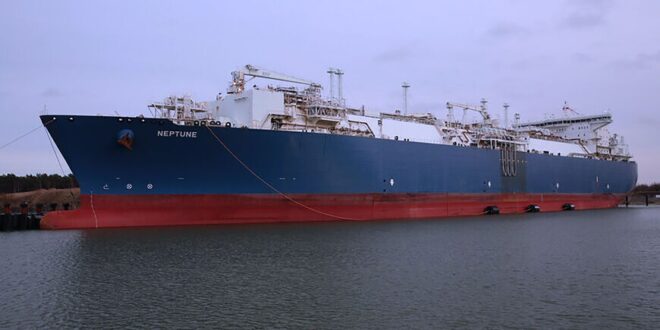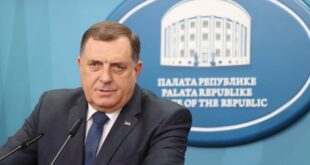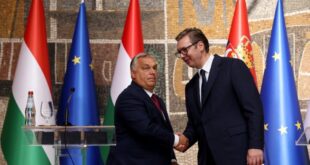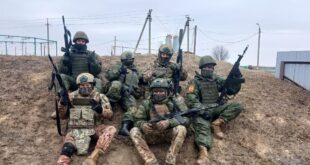As the war in Ukraine drags on, Western sanctions on Russia, the world’s largest natural gas and second-largest oil exporter, have sent Europe hunting for alternatives in the Middle East and North Africa.
The year-old war in Ukraine has shifted energy dynamics between Europe and the Middle East as Russia, the world’s largest natural gas and second-largest oil exporter, continues to face sanctions from the West.
Several European leaders have gone on a charm offensive with state visits to energy-rich countries in the Middle East and North Africa region in recent months. For example, when she visited Algeria in January, Italian Prime Minister Giorgia Meloni evoked the two countries’ shared history in an effort to forge a strategic partnership to help wean her country off Russian energy.
With Europe’s main energy supplier out of the picture, there is a huge energy scarcity on the continent. The Dutch Groningen gas field is due to close in October, and Norway is working at its oil and natural gas production limits.
In 2021, Europe imported 2.2 million barrels per day from Russia, including 700,000 via pipelines and 1.2 million bpd of refined oil products, according to the International Energy Agency.
But after Russian President Vladimir Putin launched his full-scale invasion of Ukraine in February last year, European governments encountered a problem they did not foresee. As a result of their sanctions on Russia, which include oil and natural gas exports, the IEA agency said that the EU would need to make up a shortfall of 1 million barrels of crude and 1.1 million barrels of oil products per day.
Cyril Widdershoven, global head of strategy and risk for Berry Commodities Fund, told Al-Monitor, “In less than two or three months, energy security and security of energy supply was off the table, while global oil and gas markets were already fully booked.” He explained, “The only option available was to set up bilateral or maybe multilateral energy strategies to find new suppliers.”
Europe’s green revolution has not materialized, but MENA countries understand that future renewable energy demands in Europe can only be met by MENA producers, especially for green hydrogen or ammonia.
“Forced by reality, all Europeans are vying for new access to GCC and North Africa, as shown in Egypt, Algeria and Gulf countries,” Widdershoven said, adding that some of them hoped for a revival of the Iran nuclear deal, “opening up Iranian oil and gas volumes, but the latter has been put on ice again.”
A balancing act
Most MENA countries are very careful in how they balance Russian and Western relations.
Homayoun Falakshahi, a senior commodity analyst at Kpler, told Al-Monitor, “With Russia being a major player of OPEC+, cooperation on the oil front remains of extreme importance to most MENA countries.”
Most MENA countries have fallen short of publicly criticizing Moscow for the war and are trying to take advantage of the economic reality, he said. “However, while they are doing this, they are careful to do so in a diplomatic way, so they are telling Europe that they will foster energy relations, but this doesn’t mean that they undertake a shift from their traditional customers, which, for the Middle East, mainly consists of Eastern Asian countries.”
As the war drags on, some MENA countries may struggle to keep up with European demand. There is a lack of spare capacity in the short term as well as many long-term supply contracts already in place.
For example, Qatar could not shift more than 10% of its product to Europe in 2022 compared to 2021 due to most already being sold via long-term contracts to Asian customers. The Gulf country did increase LNG exports to Europe last year, from 16.9 to 19.4 million tons, but Europe’s share only increased from 21.6% to 24.2%.
Overall oil shipments from the MENA region to Europe jumped from 1.2 million barrels a day in 2021 to 1.7 million in 2022, and Europe’s share increased from 7.5% to 9.4%. Europe’s products imports from MENA increased around 10% from 910,00 barrels a day in 2021 to 1 million in 2022, but has held around 1.2 million barrels per day so far in 2023.
“We have seen an increase in the energy trade between MENA and Europe but not a complete shift,” said Falakshahi. “The main increases have come from Saudi Arabia and Iraq in terms of volumes, but we’ve also seen a few trades with oil from Abu Dhabi, Kuwait and Oman reaching Europe, a very unusual trade as these countries were mostly focused on the Asian market before.”
European energy companies have shown strong interest in MENA projects, with Total, Eni and Shell signing contracts to develop Qatar’s LNG exports. “These same companies plus BP and Equinor are said to be interested in Algeria’s upcoming bidding round, and Total, which wanted to exit Iraq, finally decided to stay,” Falakshahi said.
He said that the Middle East could supply Europe with diesel and other refined products.
“Europe could face a shortage of diesel mostly, as it used to import 40% of its diesel from Russia and only started trimming down their imports as the latest sanctions package on Russian products was implemented on Feb. 5,” Falakshahi said. “The Middle East has a few refineries which have started operations recently or will do in the coming months: Jizan in Saudi Arabia, Al Zour in Kuwait, Karbala in Iraq, Duqm in Oman.”
He said the arbitrage will be such that it will make a lot of sense for these refiners to export to Europe.
The analyst believes that more Russian crude will be turned into MENA products and then re-exported into Europe, and North Africa could serve as a transhipment hub.
“Due to Russia’s main crude blend — Urals — having similar specifications as most Middle Eastern crude, it would make economic sense for some MENA countries to import Russian crude, refine it into products and export these to Europe. As soon as you mix crude with a drop of another crude or if you refine, it loses that Russian stamp.”
The MENA countries will foster better energy trade relations with Europe, he said, but are likely to maintain their focus on Asia, where they see most of the growth in the coming years.
 Eurasia Press & News
Eurasia Press & News



